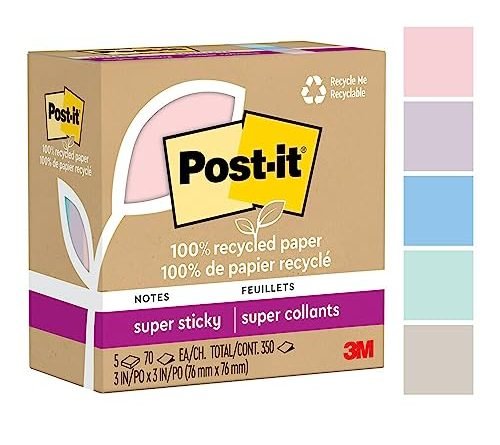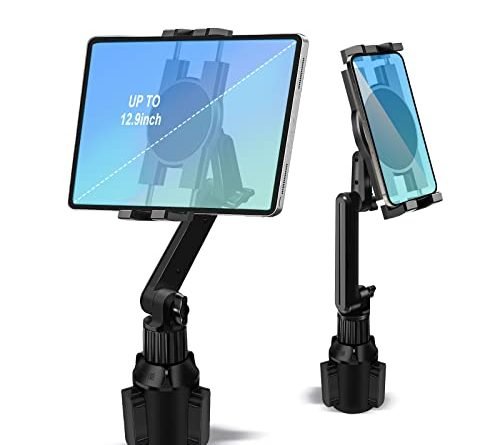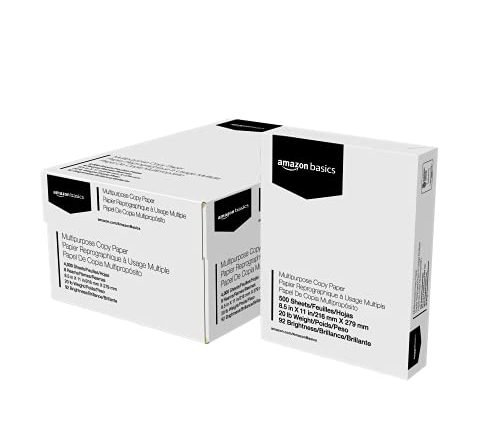
Blog Monetization Essentials: Starting and Succeeding
Welcome to the world of blog monetization! With the potential of making money from blogging, many people are increasingly taking to the internet to share their passions and expertise with the world. But how does blog monetization work, and how can you get started on this lucrative journey? In this guide, we’ll break down the essential aspects of monetizing a blog, from building high-quality content and finding a profitable niche to selecting the right strategies and leveraging various income streams to maximize your earning opportunities.
Key Takeaways
- Blog monetization involves generating revenue from online content through several methods such as advertising, affiliate marketing, sponsored content, and product sales.
- Creating high-quality content is essential for attracting and retaining a loyal following and lays the groundwork for successful monetization efforts.
- Finding a profitable niche and understanding your audience are crucial factors in determining the best monetization strategies for your blog.
- Income streams can vary widely, so it’s important to choose those that align with your blogging style, niche, and audience preferences.
- Plan and execute blog monetization strategies by setting realistic expectations and focusing on a consistent, authentic approach to content creation.
Exploring the Foundations of Blog Monetization
Blog monetization entails generating income from various sources, such as online advertisements, affiliate marketing, and selling digital products or services. By understanding the foundations of blog monetization strategies and selecting the appropriate method that best resonates with your content and audience, you can create a steady revenue stream and potentially turn your blog into a thriving business.
When it comes to monetizing a blog, it’s crucial to be aware of the different income-generating options, as each has its advantages and disadvantages. Below is a table outlining several strategies, highlighting their benefits and drawbacks to help you make an informed decision:
| Monetization Strategy | Benefits | Drawbacks |
|---|---|---|
| Online Advertisements | Passive income, can earn revenue through clicks or impressions | May distract users, lower revenue unless traffic is high |
| Affiliate Marketing | Earn commissions on product sales, aligns with content | Requires a strong, trusting audience, may not work in all niches |
| Selling Digital Products/Services | Control over price and offerings, higher profit margins | Requires time to create and market products, audience may not be ready to purchase |
| Sponsored Content | Paid partnership with brands, showcases expertise | Requires a sizable audience, may be perceived as less authentic |
Once you’ve studied the various blog monetization strategies, it’s crucial to implement them thoughtfully and assess their effectiveness consistently. Continuously analyze your blog’s performance and tweak your approach as needed to optimize your income and strike the right balance between monetization and user satisfaction.
Identifying Your Blog Monetization Goals
Setting realistic expectations for blog revenue begins with acknowledging that monetization is not an overnight process but rather one that requires strategy and time. To set achievable financial targets, bloggers should be prepared to invest effort into creating valuable content and building a robust readership. These foundational steps will pave the way for monetization success.
Setting Realistic Expectations for Revenue
Preparing yourself for the financial aspect of blogging involves understanding that revenue generation may take time. Here are some keypoints to remember when setting expectations for blog revenue:
- Monetization doesn’t happen overnight
- Be consistent with your blogging efforts
- Increase your outreach to attract more readers
- Track your progress and adjust your strategies accordingly
Understanding Different Income Streams
Diversifying your sources of income is essential for sustainable blog monetization. Explore various income streams to determine the ones best suited for your blog’s niche and your audience’s interests. Here are some popular methods for earning money through your blog:
- Blog advertising options
- Affiliate marketing for blogs
- Sponsored posts for blog monetization
- Selling eBooks or digital products
| Income Stream | Description | Pros | Cons |
|---|---|---|---|
| Blog advertising options | Display ads or pay-per-click ads on your blog | Passive income, easy to implement | Requires substantial traffic, may disrupt user experience |
| Affiliate marketing for blogs | Promote products or services and earn a commission | Can be lucrative, relevant to your content | Building trust with readers is crucial |
| Sponsored posts for blog monetization | Create content for brands and get paid | Potentially high revenue, increases credibility | Requires an engaged audience, may affect content authenticity |
| Selling eBooks or digital products | Create and sell your own digital products | Complete control over pricing, scalability | Requires time and effort to create, marketing skills needed |
Taking the steps to monetize a blog involves setting realistic expectations for success and understanding the various income streams available. Explore your options, and tailor your monetization strategies to the unique needs of your blog’s niche and audience. With patience and persistence, you can turn your blogging passion into a profitable venture.
The Role of High-Quality Content in Monetizing a Blog
Creating high-quality blog content is the cornerstone of successful blog monetization. Engaging and valuable content not only attracts and retains readers but also establishes credibility and expertise in your niche. Moreover, it fosters a trustworthy community that is willing to invest in your blog’s products, services, or content. In essence, content is king in monetization, providing the foundation on which all monetization efforts are built, driving organic traffic, and elevating your blog’s reputation.
Here are a few key aspects to consider when creating high-quality content for successful blog monetization:
- Consistently produce content that resonates with your target audience and addresses their specific needs or pain points.
- Incorporate a mix of evergreen and trending topics to provide valuable and timely information to your readers.
- Ensure that your content is well-written, free of grammatical errors, and professionally presented.
- Optimize your content for search engines, including the use of relevant keywords, effective meta descriptions, and proper header tags.
- Regularly update older posts to keep them fresh, current, and aligned with best practices.
To help you grasp the importance of high-quality content in blog monetization, consider the following hypothetical comparison:
| Blog A | Blog B |
|---|---|
| High-quality, valuable, and engaging content. | Low-quality, uninspiring, and poorly written content. |
| Attracts a strong organic following, with readers sharing the content across various platforms. | Struggles to attract and retain readers, resulting in low visibility and minimal sharing of content. |
| Audience perceives the blogger as an authority in the niche, leading to trust and willingness to invest in products or services. | Limited credibility and trust, resulting in minimal interest in purchasing products or services. |
| Establishes partnerships or sponsorships with relevant brands, thanks to a solid reputation. | Fails to attract lucrative partnerships or sponsorships, due to a lackluster reputation within the niche. |
The above comparison clearly illustrates how high-quality content can significantly impact your blog monetization efforts. By investing time and energy into creating exceptional content, you’ll be better positioned to capitalize on the various monetization strategies available and ultimately turn your blog into a profitable venture. Remember, content is king in monetization, and your journey to blog monetization success begins with a solid foundation of high-quality content.
Finding Your Profitable Niche: A Key to Monetization Success
Discovering a profitable niche for your blog is an essential step on the path to successful monetization. This section will guide you through researching market demand, understanding audience needs, and ultimately, identifying the ideal niche that aligns with both your passions and monetization goals.

Researching Market Demand and Audience Needs
To begin the process of uncovering a lucrative niche, start by assessing your personal interests. It is significantly easier to create high-quality content and maintain an engaged audience if your topic genuinely excites you. Next, dive into market demand and audience needs. Examine trends, competition, and potential for growth within the niche to ensure a sound foundation for your monetization strategy.
Keyword research and trend analysis are powerful tools that can provide valuable insights into audience interest. Utilize platforms like Google Trends and keyword research tools to gauge the popularity of specific topics over time. This data can inform your decision-making process as you search for a niche with potential for substantial growth and profitability.
Analyze the content breadth of your chosen niche, ensuring that it aligns with your expertise. Reflection on the value your content offers to readers is crucial. Consider the following questions:
- What unique perspective or expertise can you bring to the table?
- How does your content stand out from competitors?
- Are there emerging trends within your niche that you can capitalize on?
Understanding the answers to these questions not only helps in choosing a profitable niche but also sets the stage for effective monetization efforts, positioning your blog for long-term success.
Stay open to emerging niches with growing demand; these often present ideal targets for monetization. By regularly monitoring trends and adjusting your content strategy accordingly, you can capitalize on opportunities and maintain a strong position within your niche.
With dedication to researching market demand, understanding audience needs, and nurturing your passion, you’ll be well-equipped to embark on the journey towards successful blog monetization in your chosen niche.
Blog Branding and Naming for Monetization
Blog branding and naming are integral to the monetization process as they capture the essence of your blog and establish its identity. Creating a memorable blog name and distinctive brand image can attract and retain audiences, signaling the core values and content focus of your blog. By incorporating niche keywords into your blog name, you can boost your blog’s search engine optimization (SEO) and establish a clear blog theme.
Here are some key aspects to consider when creating your blog brand and choosing the right name:
- Reflect your niche and target audience: Your blog’s name and overall branding should convey the essence of your niche, while resonating with your target audience. This makes it easier for readers to identify and connect with your blog’s purpose.
- Keep it simple, pronounceable, and easy to remember: A short, simple, and easily pronounceable name has higher chances of sticking in a reader’s memory. Avoid overly complex terms or names that are difficult to spell or pronounce.
- Ensure it’s unique and memorable: Stand out from the competition by developing a unique and catchy name. A distinctive blog name can set you apart and make it easier for readers to recognize your brand.
- Check for domain name availability: Before finalizing your blog name, ensure the corresponding domain name is available for purchase. A matching domain name helps in maintaining consistency between your blog name and its web address.
To help kickstart your brainstorming for an exceptional blog name, explore the following table containing examples of successful blog branding that effectively monetized their content:
| Blog Name | Niche | Branding Description |
|---|---|---|
| Copyblogger | Content Marketing | A compound name that combines ‘copy’ and ‘blogger’ to convey the blog’s focus on creating high-quality online content. |
| Nerd Fitness | Fitness and Wellness | A name that caters to a specific audience – fitness enthusiasts with a geek culture inclination, fostering a sense of community. |
| Minimalist Baker | Food and Cooking | A name that conveys the blog’s core focus on simple, accessible recipes with minimal ingredients, equipment, and effort. |
| Smart Passive Income | Entrepreneurship and Passive Income | A name that highlights the blog’s commitment to helping readers generate smart passive income, emphasizing financial freedom and success. |
Remember, attention to your blog branding and naming is crucial for monetization, as a cohesive and appealing brand can help you attract and retain a loyal audience. Invest time and effort into developing a memorable name and brand that resonates with your target audience and reflects your blog’s core values and content focus.
Technical Aspects: Setting Up Your Blog for Monetization
Before optimizing your blog for monetization, it’s crucial to consider various technical aspects, ensuring efficiency, user-friendliness, and seamless monetization options.
Choosing a Reliable Hosting Platform
Selecting a reliable hosting platform for blogs is essential for maintaining blog uptime, speed, and security, all of which are critical for preserving a professional image and ensuring positive user experiences. Consider hosting options like Bluehost, SiteGround, or WP Engine to find the optimal balance of features, support, and scalability, which is key to your blog’s long-term growth and monetization potential.
Designing for User Experience and SEO
When designing your blog, prioritize user experience and SEO to maximize visibility, traffic, and revenue opportunities. Essential elements include:
- Creating a visually appealing layout
- Organizing content logically
- Optimizing for mobile responsiveness
- Ensuring fast load times

Additionally, implementing SEO best practices can further increase your blog’s visibility. These practices include using keyword-rich titles, writing informative meta descriptions, and incorporating alt text for images.
Installing Essential Monetization Plugins
Essential plugins for blogs can streamline the monetization process by offering seamless integrations for ads, affiliate marketing, memberships, and other revenue avenues. Some popular monetization plugins include:
- Google AdSense In-feed ads for WordPress
- Amazon Associates for WordPress (AAWP)
- MemberPress
- Easy Digital Downloads
Selecting and installing the right set of plugins can significantly enhance your blog’s functionality, track performance, and optimize revenue generation efforts.
Implementing Blog Monetization Strategies
Implementing blog monetization strategies is essential to transform your blog into a profitable business. To achieve sustainable monetization, careful planning and execution are crucial. Consider the following steps to successfully implement monetization strategies:
- Develop a mix of revenue streams. Diversify your income sources to include various monetization methods such as display ads, affiliate marketing, sponsored content, and selling digital products. Customize the mix to suit your blog’s niche and audience interests.
- Leverage networking opportunities. Seek sponsorship deals, explore collaborations, and establish partnerships with businesses and influencers related to your niche. These connections can provide new avenues for monetization and expand your blog’s reach.
- Maintain a consistent and authentic approach. Continue delivering high-quality content that resonates with your audience and stays true to your blog’s mission. Genuine engagement with your readers is essential to retain and grow your following, paving the way for successful monetization.
A well-rounded blog monetization strategy encompasses a balance between passive and active revenue sources, promoting financial stability and growth. To illustrate the potential impact of different blog monetization methods, consider the following table:
| Monetization Method | Revenue Potential | Pros | Cons |
|---|---|---|---|
| Display Ads | Low to Medium | Passive Income, Easy to Implement | Requires High Traffic, Can Impact User Experience |
| Affiliate Marketing | Medium to High | Targeted Income, Scalable | Requires Trust and Engaged Audience |
| Sponsored Content | Medium to High | Control over Content, High Earning Potential | Dependent on Partnerships, Maintaining Authenticity |
| Digital Products | High | Scalable, Creative Control | Requires Time and Resources, Finding Right Product |
By effectively implementing blog monetization strategies and regularly evaluating their performance, you can optimize your blog’s earning potential and achieve monetization success over time.
Leveraging Advertising Options for Your Blog
One effective way to monetize your blog is by utilizing advertising options such as pay-per-click and display ads. With the right knowledge and approach, these advertising models can generate passive income for your blog.
Understanding Pay-Per-Click and Display Ads
Pay-per-click (PPC) and display ads are two popular advertising models for blogs. They differ in terms of how they appear and how they generate revenue.
- Pay-per-click ads: These are ads that generate revenue based on the number of clicks received. PPC campaigns typically involve keyword bidding, with advertisers competing to show their ads for specific keywords. Popular platforms for running PPC ads include Google AdSense and Microsoft Advertising.
- Display ads: These are visual ads that appear on your blog in the form of banners, buttons, or other graphics. Earnings from display ads are usually based on the number of impressions, or the number of times the ad is shown, rather than clicks. Display ads can be managed through platforms like Google AdSense or directly negotiated with advertisers.
To make the most of these advertising models, consider the following:
- Choose a suitable ad platform that aligns with your audience and niche.
- Create engaging ads that resonate with your readers and encourage interaction.
- Position ads strategically on your blog to maximize visibility and engagement.
By understanding and leveraging PPC and display ads, you can create additional revenue streams for your blog and boost your monetization efforts.
| Advertising Model | Description | Platforms | Revenue Generation |
|---|---|---|---|
| Pay-Per-Click (PPC) Ads | Ads that generate revenue based on the number of clicks received. | Google AdSense, Microsoft Advertising | Per-click basis |
| Display Ads | Visual ads in the form of banners, buttons, or other graphics that appear on your blog. | Google AdSense, direct negotiation with advertisers | Per-impression basis |
In conclusion, advertising options like blog pay-per-click ads and display ads for blogs present valuable opportunities for blog monetization. By selecting the right ad platform, designing engaging visuals, and strategically placing these ads on your blog, you can generate passive income and enhance your blog’s overall financial success.
Conclusion
In the quest to make money from blogging, it’s essential to recognize that blog monetization success relies on various factors. Developing a strong foundation of high-quality content, identifying a well-defined niche, building an engaged audience, and strategically implementing monetization tactics are all crucial aspects to consider.
With patience and persistence, it’s possible to transform your blog into a profitable business venture. As you delve deeper into the world of blog monetization, it’s important to stay updated on the latest industry trends, strategies, and tools that can help you optimize your efforts and maximize revenue.
Ultimately, achieving blog monetization success comes down to the balance between creativity, value, and strategy. By honing your unique voice, understanding your audience, and continuously adapting to the evolving digital landscape, you’re well on your way to turning your passion for blogging into a fruitful income source.
FAQ
What are the foundations of blog monetization?
The foundations of blog monetization include understanding the various ways a blog can generate income, such as online ads, affiliate marketing, sponsored content, and selling digital products or services. Choosing the right strategy that aligns with your blog’s content and audience is essential for creating a steady revenue stream.
How can I set realistic expectations for blog revenue?
To set achievable financial targets, be prepared to invest time and effort into creating valuable content and building a robust readership. Acknowledge that monetization is not an overnight process but rather one that requires strategy and patience.
What are the different income streams for monetizing a blog?
Some common income streams for blog monetization include advertising through pay-per-click or display ads, affiliate marketing, selling eBooks or digital products, writing sponsored content, and earning brand sponsorships. It’s essential to choose strategies that suit your blog’s niche and audience interests for optimal results.
How does high-quality content impact blog monetization?
High-quality content is paramount in blog monetization. It attracts and retains readers, establishes credibility and expertise, fosters a trustworthy community willing to invest in the blog’s products, services, or content. High-quality content becomes the foundation on which all monetization efforts are built, driving organic traffic and elevating the blog’s reputation.
How can I identify a profitable niche for my blog?
To identify a profitable niche, assess your personal interests, market demand, and audience needs. Use keyword research and trend analysis to gauge audience interest. Determine the niche’s content breadth and make sure it aligns with your expertise and passion. Reflect on the value your blog offers and how it distinguishes itself from competitors. Emerging niches with growing demand are often ideal targets for monetization efforts.
How important is blog branding and naming for monetization?
Blog branding and naming are crucial for monetization, as they encapsulate the essence of the blog and establish its identity. A memorable name and a distinctive brand image can attract and retain audiences while signaling the core values and content focus of the blog. Incorporating niche keywords into the blog’s name can also boost SEO and clarify the blog’s theme.
What are some technical aspects to consider when setting up a blog for monetization?
Technical aspects to consider include choosing a reliable hosting platform, designing for user experience and SEO, and installing essential monetization plugins. A reliable hosting platform is crucial for blog uptime, speed, and security, while designing for user experience and SEO involves creating a visually appealing layout, organizing content logically, and optimizing for mobile responsiveness and fast load times. Essential monetization plugins streamline the monetization process and enhance functionality.
How can I implement blog monetization strategies?
Implementing blog monetization strategies requires careful planning and execution. Develop a mix of revenue streams that suit your blog’s audience, leverage networking opportunities to secure sponsorships or partnerships, and maintain a consistent and authentic approach in content creation to build a sustainable monetization strategy.
What are the benefits of leveraging advertising options like pay-per-click and display ads?
Advertising options such as pay-per-click and display ads can generate passive income for your blog. By selecting the right platforms like Google AdSense, designing ads that resonate with your audience, and strategically placing them for optimal engagement, you can earn revenue on a per-click or per-impression basis.






